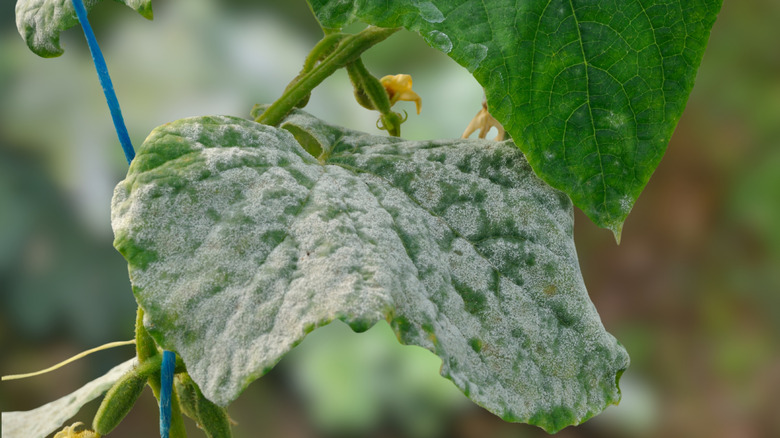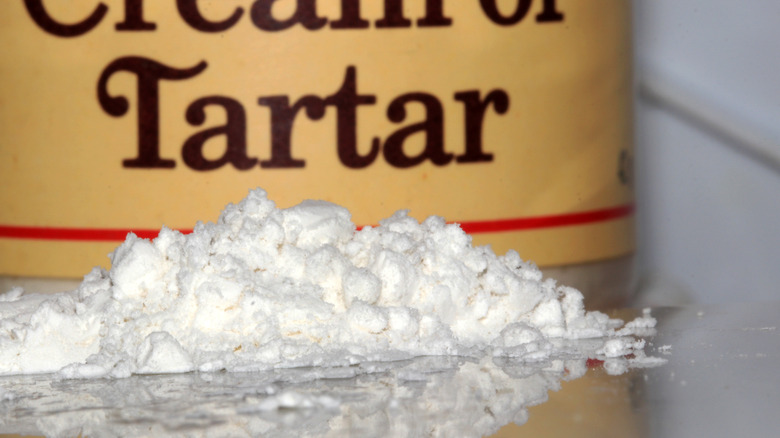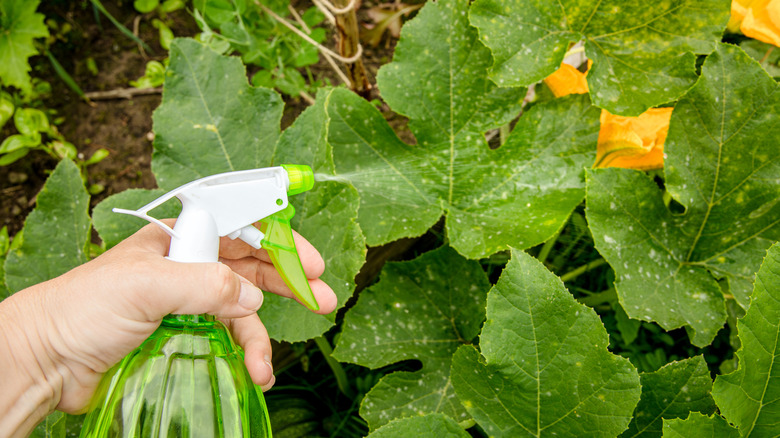Can Cream Of Tartar Kill The Powdery Mildew On Your Garden Plants? Here's What To Know
If you've started to notice tiny, white, powdery, or splotchy spots on your plants, you might be dealing with a common fungal disease known as powdery mildew. While it typically doesn't cause long-term harm to your plants and rarely kills them, it can cause weakness and give them an unappealing gray cast. The disease thrives in warm environments with high evening humidity and is usually spread to your garden by the wind, germinating on the surface of your plants' leaves, as it requires living plant tissue to grow.
The fungus has a white or gray powdery texture, which may start in small patches and then cover entire leaves. In combination with the mildew, your plants' leaves might also start to turn yellow, curl up, and turn brown. Before you look online for hacks on how to try and rid your plants of this disease, know that not every trick you see is totally credible. While rumors have been circulating on the internet about the possible benefits of cream of tartar as a treatment for powdery mildew, there is little evidence to back up this claim.
Cream of tartar is a cooking aid typically used alongside baking soda in various recipes to add a fluffy texture and tangy flavor. It has also been flaunted as a fungal killer. There are a few kitchen ingredients that can be used to fight powdery mildew, including vinegar, baking soda, and even milk, but despite this cream of tartar hack's claims, there is no strong evidence of its effectiveness.
Cream of tartar isn't a strongly supported solution
Cream of tartar, also known as potassium bitartrate, potassium hydrogen tartrate, or tartaric acid, is a byproduct of the wine fermentation process. The substance contains tartaric acid from grapes, which is then half-neutralized with potassium hydroxide. While it's unclear why some gardeners decided to start using this baking ingredient on their plants, it may have to do with the fact that it is similar to baking powder and baking soda, the latter of which can be used to combat powdery mildew. Together, cream of tartar and baking soda create baking powder.
You may have seen a few content creators and gardening blogs discuss the use of cream of tartar to rid their plants of powdery mildew. However, aside from some anecdotal evidence, there isn't much research on how cream of tartar can be effective against the fungal disease. In theory, cream of tartar creates an inhospitable environment. "The acidic solution changes leaf pH just enough to discourage fungal spores. I've seen good results on cucumbers and zinnias," master gardener and TN Nursery founder Terry Sons told Martha Stewart.
There's no harm in trying, but other solutions may work better
While there isn't much research to prove that cream of tartar will relieve your plants of powdery mildew, it's also not shown that the mixture will harm them, so it may be worth a try. Recipes may vary, but one technique involves mixing 1/2 teaspoon of cream of tartar into a quart of warm water, then adding a drop of regular dish soap. Pour this concoction into a spray bottle and mist it over your plant's leaves every few days. Diluting is key to keep the acidic substance from burning your plants, but beware that it may alter the soil pH if used excessively.
Before adding any treatment to your plants, first remove any affected leaves, including ones that have fallen onto the ground. This act in itself can help control the fungi's spread. While it may not be super effective against the powdery mildew on your plants, cream of tartar can be beneficial in other ways around your yard. Some gardeners recommend using the ingredient as a natural weed killer or pest control due to its mild acidic properties. While cream of tartar might not be the answer, there are a few other items in your kitchen that could relieve your plants of powdery mildew. Some gardeners have found that milk may actually work to treat powdery mildew in the garden, while others claim that powdery mildew is no match for a baking soda solution.


